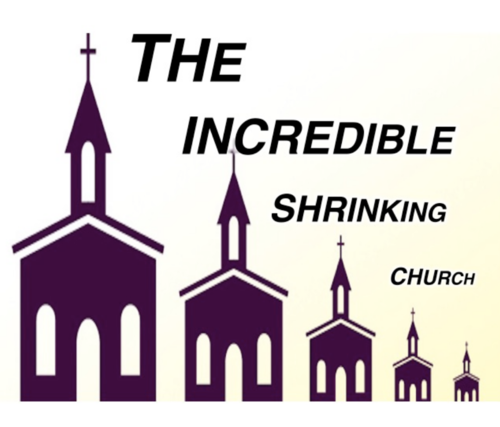What do you know: National Public Radio came to my backyard here in East Tennessee to cover an important religion-beat story. And, well, NPR saw exactly what you would expect NPR to notice, while ignoring all of the details and questions you would expect this deep-blue news organization to ignore.
Once again, we are talking about a story that is totally valid, but its producers avoided the kind of diversity in sourcing that would have made matters more complex. Here’s the headline for the online text version: “As attendance dips, churches change to stay relevant for a new wave of worshippers.”
What’s missing in this story? It’s absolutely true that there are declining churches here in the mountains of East Tennessee, especially during COVID-tide. That’s an important story. The problem is that there are also growing churches in the region (yes, including my own Orthodox parish, which has grown at least 25% in the past three years) and that’s a detail that makes this story more complex. Here is the overture:
KNOXVILLE, Tenn. — It's Sunday morning and a small group sits around a fire pit in a community garden under the limbs of an expansive box elder tree. Church is about to start. And it's cold.
"God our Father, we are just so thankful for this time that we have to share this morning," says Pastor Chris Battle, a big man with a pipe clenched in his generous smile. "And we really thank you for fire that keeps us warm even as we sit up under this tree. We just pray that you would bless our time together."
Three years ago, Battle walked away from more than three decades leading Black Baptist churches and turned his attention to Battlefield Farm & Gardens in Knoxville. They grow vegetables and sell them at a farmer's market. They also collect unsold produce from around the city and deliver it to people in public housing once a week.
Battle says he left because traditional church was not connecting with people. He felt they were turned off by the sermons, the pitches for money, the Sunday-morning formality of it all.
This brings us to the first of two thesis statements describing the big picture:
American Christianity is in the midst of an identity crisis. Attendance is in steep decline, especially among millennials and Gen Z who say traditional church doesn't speak to their realities.
In response, religious leaders are scrambling to experiment with new ways to offer meaning in peoples' lives. Most of the folks who show up at Battlefield Gardens on Sunday mornings say they're looking for a faith community, but they're burned out on traditional religion.
Readers really need to see the second part of that NPR equation to see the lopsided nature of this story, so here we go:
Last year, Americans' membership in houses of worship fell below 50 percent for the first time since Gallup started its authoritative religion survey. In 1937 — the year the Gallup poll began — seven out of 10 Americans attended church. In 2020 — before the pandemic — only 47 percent of Americans belonged to a church, synagogue or mosque, according to the survey. It's been trending downward since 2000. Young people are rejecting organized religion and some churches are facing an existential crisis.
That’s all valid, with the possible exception that young Americans seem to be avoiding some forms of “organized religion” more than others. The overarching trend in the religion marketplace is that the old mainline MIDDLE is in a state of demographic collapse (see this file about recent Episcopal Church statistics).
Meanwhile, trends are more complex among more traditional religious groups. Some are growing, some are merely holding their own and others (think Southern Baptist Convention) are losing members to the rapidly growing world of nondenominational evangelical and/or charismatic-Pentecostal flocks. Chart-master Ryan Burge notes, for example, that evangelicalism is not in sharp decline. At the same time (Burge again) the world of religiously unaffiliated “Nones” and “Nothing in Particulars” keeps growing.
The NPR report nods toward several of these trends — “hemorrhaging” is a strong word for the mainline — but only considers one side of the equation, especially if the goal was to capture what is happening here in East Tennessee.
Thus, readers are told:
This impulse — this urgency — to try something new is being felt throughout the Christian church. Once-booming evangelical churches are worried about declining numbers. But liberal mainline protestants like the Lutherans, Methodists, Presbyterians, and Episcopalians are hemorrhaging members.
Consider Knoxville's Marble City United Methodist Church. The stained-glass windows are still there, but today the structure houses an architectural firm and a Golden Roast coffee shop. The congregation abandoned the building in 2011 and merged with another Methodist church because of steadily declining membership.
Again, these are valid trends — especially the trend of mainline churches surviving with indirect financial aid by housing organizations from the world of nonprofit groups, businesses and even government work.
But what is happening in the churches that are growing? Why are some people leaving some forms of organized religion and converting into others? What churches are attracting young families and making converts (one way or another).
To be blunt, are some believers leaving the organized religion of ‘60s and ‘70s America and seeking — in many cases — older, in this context alternative, forms of faith? What is happening, for example, in Roman Catholicism here in the Bible Belt? Meanwhile, are the nondenominational megachurches shrinking?
Just asking. Why only cover half of the religion scene here in East Tennessee and in many other parts of a rapidly changing America?

